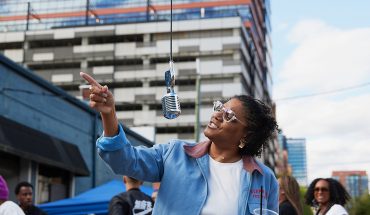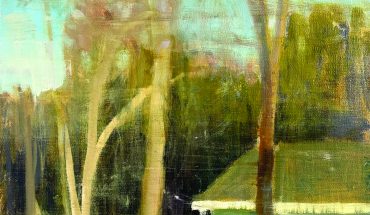by James White
When I walk down the streets of Raleigh, it is as if I can hear Charles Dickens’ A Tale of Two Cities running through my mind.
“It was the best of times, it was the worst of times, it was the age of wisdom, it was the age of foolishness, it was the epoch of belief, it was the epoch of incredulity, it was the season of Light, it was the season of Darkness, it was the spring of hope, it was the winter of despair, we had everything before us, we had nothing before us…”
Dickens’ words capture the chaos of our times. To borrow a term from Visa founder and business thinker Dee Hock, we could describe our city as “chaordic,” a combination of chaos and order. Finding the right words to describe it is difficult. Maybe it would be best to consider our city a work of art: To be specific, a mosaic.
A mosaic is a picture or a design that is constructed from smaller pieces that alone are insignificant. Pieces that are durable, reflective, or iridescent. Pieces that are broken, and do not obviously belong together. Pieces of forgotten places and people. When those pieces are placed together, they can create something truly beautiful.
In order to see the beauty of a mosaic, though, one has to pause, back up, and take the long view. We have always had pieces in our city that were broken, and did not seem to fit, and yet, when assembled together, they made sense. You cannot avoid the pieces that make Raleigh a mosaic, no matter what direction you walk in.
The State Capitol was the site of the Secession Convention on May 20, 1861, which resulted in North Carolina breaking from the Union.
It was in the basement of that capitol building nearly 50 years earlier that Raleigh residents, black and white, established a covenant to worship together with the formation of First Baptist church. The charter committee consisted of 23 people; 14 were black and 9 were white. The church grew, even through the challenges that led to the Civil War, to about 436 people by 1859.
If you turn from the capitol building to the First Baptist Church that stands at the corner of Wilmington Street, you will see the building that represents that covenant’s schism. The war that broke our country into pieces also broke this faith community into separate entities. Approximately 200 people left to form a congregation called First Colored Baptist Church.
Eventually, that congregation changed its name back to First Baptist. But even today if you are looking for First Baptist of Raleigh, you will have to distinguish between two places with the same name. Even out of the historical brokenness of segregation, they are still serving the city – celebrating life, christening babies, marrying people and burying them – through differences that were determined many years ago.
Artistic design
Despite its fault lines, the city reflects the artistic design that was in the hearts and minds of the designers of our community. Consider the many educational opportunities we have within a 10-minute drive: colleges and universities originally founded to educate women and freed enslaved people, among others.
This is thanks in large part to a philanthropic commitment to rebuild people who had historically been devalued. The root of the word philanthropic means love of mankind. Could it be that the beauty of our city comes not just from a love of learning, but from loving people?
Education for women was valued in 1857 by William Peace who had the vision for William Peace University. In 1865, Henry Martin Tupper, while serving in the Union Army, developed a commitment to helping enslaved people. Rev. Tupper began with a bible study, but he understood the need for formerly enslaved people to engage their beautiful minds more broadly. That, in turn, led to the birth of institutions including Shaw University, which educated leaders who in turn gave birth to Elizabeth City State University, Livingston College, N.C. A&T, Fayetteville State University, and N.C. Central University.
A community of learning for all was important in 1887 when the North Carolina General Assembly realized that it needed to help meet the needs of a rebuilding North Carolina with agriculture and technical excellence, and N.C. State University was founded.
Hope and despair
The mosaic of our city can be seen on a single street that contains our beauty and our painful burden. On one end of Martin Luther King Jr. Boulevard stands Shaw University. As it becomes Western Boulevard, the road passes Central Prison before it reaches N.C. State University. In between two institutions of hope lies the reality of despair.
On the other side of the capitol lies historic Oakwood Cemetery, resting place of confederate soldiers. Plato was right when he said, “Only the dead have seen the end of war.”
In 1867, Rev. J. Brinton Smith built nearby St. Augustine’s University, another school for freed slaves. When one drives by the campus, one can see the remains of St. Agnes Hospital, where doctors were once trained. The university itself has manged to weather financial and leadership challenges over the years, and today stands strong.
There are so many pieces of the mosaic that we engage and encounter every day. More pieces are added, some are changed, and some have remained the same. Maybe the key is what holds us all together.
Unfortunately, the mosaic can too often appear as a random collection of broken pieces because we suffer from selective amnesia instead of a structured, shared memory that could hold together our tragedies and triumphs as a community.
Another challenge of a mosaic is that once its foundation has been set, it’s not easy to reimagine what’s already there. It is best instead to add another piece to increase its beauty. Perhaps that is what is happening in our booming city as new pieces are being added every day. There is no mistake; there is simply more complexity and beauty being added to the masterpiece we call our city.
Perhaps it’s true that we are allowed to be both a masterpiece and a work in progress simultaneously. As some things come to an end, they allow new things to begin. The sights and sounds of artwork are all around us.
As Dickens concluded A Tale of Two Cities, he was optimistic: “It is a far, far better thing that I do, than I have ever done; it is a far, far better rest that I go to than I have ever known.” Could it be that we are becoming a far, far better mosaic than we have ever known?
James White is pastor of Christ Our King Community Church in Raleigh and the executive vice president of organizational relations at the YMCA of the Triangle.




